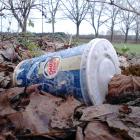Pollution and Industrialization of the Neva and Viennese Danube in the Nineteenth and Early Twentieth Centuries
Pollution and Industrialization of the Neva and Viennese Danube in the Nineteenth and Early Twentieth Centuries
In this chapter of their virtual exhibition “‘Commanding, Sovereign Stream’: The Neva and the Viennese Danube in the History of Imperial Metropolitan Centers,” the authors discuss similarities and differences in the history of water supply, pollution, and waste management in St. Petersburg and Vienna.
































